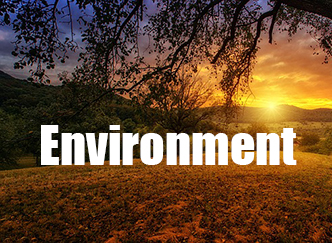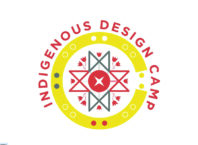By Winona LaDuke
It’s almost time for manoominikewag, when we make wild rice. Many of us, like Veronica Skinaway of the Sandy Lake community, begin our harvest at Minnewawa and the Sandy Lake Flowage, two of the richest wild rice territories in northern Minnesota. The rice comes in early and is a constant and secure source of food.
Ancient villages of mounds remind us of our 4,000-year-old history in the region and birchbark scrolls demarcate Big Sandy for travel and migration routes, all would become permanent Ojibwe villages from 1730s. These lakes are a part of the sacred landscape of the Anishinaabeg.
The lake and water remember the Anishinaabeg, those who come to fish and harvest wild rice, and those who perished here. More than 400 Anishinaabe starved to death during the America’s genocide against the Ojibwe in the winter of l850, their spirits and bodies remain. The Anishinaabe universe contains a complex world of beings, above and below. That world is not known by Minnesota, or by multinational mining corporations, and those two worlds are about to collide. The Talon mine could lay to waste the Sandy Lake Watershed, inundating it with sulfuric acid, sucking down the lake levels like those on shallow Lake Minnewawa, and contaminating the waters of the l855 treaty territory, now called Aitkin County.
The Mine
Talon Mining is after nickel and cobalt, allegedly for the electric car market. The project is pitched as “green mining,” framed to pit the people and the water against renewable energy. The fact is that the minerals the companies pursue may be obsolete in the battery market by the time this mine would be operational. In the aftermath, all we would have is a hole in the ground, contaminated water, and a superfund site. That’s not so green.
Talon Mining Corporation is a junior mining company based out of the British Virgin Islands, a place where corporate money is protected. With Canadian ownership, the company is considered a junior Canadian mining corporation. Junior Canadian mining corporations have the worst human rights and environmental records in the world. Talon with its big backer, Rio Tinto (RT) have leased or purchased over 90,000 acres of Aitkin County, in the heart of the l855 treaty territory and the East Lake and Sandy Lake communities. The impact will stretch from the l855 to the l837 territory, as the company plans to pump groundwater, contaminate it, clean it, and then return it. That changes the water.
Talon estimates it will need to pump between 1.1 and l.6 million gallons of water a day out of the wetlands. Those waters recharge the shallow lakes, and neither the company, nor Minnesota’s DNR, have any idea of the impact of such a mine on Big Sandy and Minnewawa. Nor does anyone have a plan about the potential of l,800 gallons-a-minute of mine seepage water and how that would impact the shallow aquifers which serve these communities. Minnewawa Lake is not likely to survive this mine.
Rio Tinto’s Checkered Past
RT is one of the most controversial mining corporations in the world. Talon holds the majority of project shares, but is in effect, an exploratory and marketing company. Talon has no experience in mining, nor in clean-up. The problem with junior mining corporations is their liability. And it seems that Rio Tinto is not known for cleaning up their mess either.
Witness the story of Bouganville, part of Papua New Guinea, and the war the company did not win. I went to visit the former RT mine in Bouganville a decade ago. The Indigenous Melanesian people gave a tour of the mine which had plagued their community and explained how people armed with bows and arrows had defeated the Australian military. And closed the mine.
Panguna was previously one of the world’s largest copper and gold mines. The mine provided $2 billion for Rio Tinto and the Papua New Guinea Government until 1989 when an uprising against the environmental destruction and inequities forced the mine’s closure and triggered a brutal decade-long civil war. Ten thousand people died in the RT war in Papua New Guinea.
A long-term plan for remediation was laid out by the government. Conveniently in 2014, RT divested from the mine before it could be implemented, completely avoiding the cost of the clean-up. The Panguna Mine is now a toxic disaster site. According to Theonila Roka Matbob, a Makosi villager elected to the Bougainville parliament, “We live with the impacts of Panguna every day. Our rivers are poisoned with copper, our homes get filled with dust from the tailing mounds, our kids get sick from the pollution. Some communities now have to spend two hours a day walking just to get clean drinking water because their nearby creeks are clogged up with mine waste.”
Beyond Dirty Mining for Batteries
Let’s assume Minnesota’s Talon Mine is all about batteries and battery storage for renewable energy and the growing electric car industry. The fact is that lithium/nickel batteries are sort of last year’s technology. The next generation of batteries will be on the market before Talon and their expensive project is even producing ore. New batteries could be made of hemp, recycled battery materials, or sodium ion batteries, all of which are much less destructive than trading an ecosystem to a junior Canadian mining corporation.
The hemp plant has the ability to sequester carbon at one of the highest levels of any plant, and it makes an excellent graphene for batteries. According to the UK’s The Quarter Leaf, British scientist Robert Murray Smith has been studying hemp batteries and electricity for decades.
He discovered that hemp’s waste fibers can be transformed into “ultrafast” supercapacitors that are better than graphene, a synthetic carbon material lighter than foil yet bulletproof. The hemp version isn’t simply better, it costs one-thousandth of the price. Smith also found that hemp batteries perform eight times better than lithium-ion: the power underneath the hemp cell had a value of 31 while that of the lithium cell had a value of just 4.
Sodium Ion and Recycled Batteries
Then there are materials substitutions that can eliminate ecologically destructive green mining by using less destructive components. “Replacing lithium and cobalt in lithium-ion batteries would result in a more environmentally and socially conscious technology,” according to a new report issued by the National Science Foundation. “University of Texas at Austin researchers, funded in part by the U.S. National Science Foundation, have developed a sodium-based battery material that is stable, can recharge as fast as a traditional lithium-ion battery, and has the potential for a higher energy output than current lithium-ion battery technologies.”
Meanwhile, the battery recycling industry is starting to take off. And Minnesota could be in the forefront. “By and large, there’s an impression that recycled material is not as good as virgin material,” as Yan Wang, a professor of mechanical engineering at Worcester Polytechnic Institute, explains in a technical journal.
A new study by Wang and his team shows that batteries with recycled cathodes can be as good as or even better than those using new state-of-the-art materials. The recycled material showed a more porous microscopic structure that is better for lithium ions to slip in and out of. The result: batteries with an energy density similar to those made with commercial cathodes, but which also showed up to 53% longer cycle life. Sort of like upscaling leftovers.
In Europe, Battery Resources is already selling their recycled materials to battery manufacturers at a small scale. The company plans to open its first commercial plant, which will be able to process 10,000 tons of batteries, in 2022. Last September, they raised $70 million, with which they plan to launch two more facilities. That’s the kind of investment we need in Minnesota – solving the toxic waste problem and creating energy storage in one fell swoop. That is the definition of sustainability.
We have a chance to move ahead in the circular economy, to be innovators in the electric vehicle market, that’s what Minnesota should do. The other option: dig a big hole in the ground, destroy Native cultural wealth, and contaminate water forever, while the Canadian mining corporations and RT make a big profit. The Canadian corporations have already made enough of a mess of northern Minnesota. Now is the time to move towards what the Anishinaabe would call the Green Path. That’s a good path for our water and our future.







